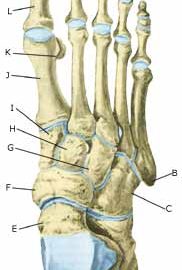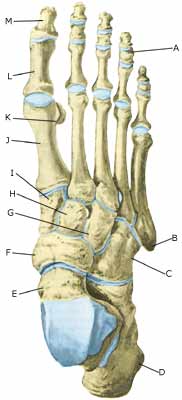|
||
|
||
| Cause: Localised cartilage injuries in the joint surfaces can occur after a vigorous twisting of the joint, where the joint surfaces impact on each other and cause cartilage damage. In some cases a piece of cartilage can be shed which can wander in the joint (joint mouse) and become jammed. In other cases, and for unknown reasons, a small piece of bone can loosen in the knee (osteochondritis dissecans).
Symptoms: Pain in the joint when under load or strain. Occasional inflammation of the synovial membrane which causes concentration of fluid in the joint. Examination: Normal medical examination is often not sufficient. To make the diagnosis correctly it is therefore necessary to perform an MR-scan (article), and possibly an arthroscopic examination of the ankle joint. Treatment: If a piece of bone is loosened in the knee (osteochondritis dissecans) it is important that the diagnosis is made as early as possible, as the earlier the treatment starts, the better the result (article). Treatment can comprise relief or surgery, dependant upon the extent of the condition and whether a piece of bone has become loose. If the condition is a result of twisting, treatment comprises relief from the painful activities until the pain is no longer experienced, after which gradual training can be commenced. There is no treatment that can restore the damaged cartilage, which has itself poor restorative ability. Different procedures to enhance the healing can be attempted using arthroscopic examination, however, the results are generally unsatisfactory (article-1), (article-2). Results from experimental cartilage transplants are still not successful enough to warrant introduction as a routine treatment in the near future. Joint mouse which provokes the symptoms must be surgically removed. Rehabilitation of children and adolescents: The load and type of rehabilitation which can be permitted is completely dependant upon the severity of the condition, the location, and the form of treatment. Rehabilitation should therefore be performed in close cooperation with the doctors controlling the treatment. Complications: Greater cartilage injuries which are positioned on the weight-bearing parts of the joint are some of the most serious sports injuries, and often result in an end to the sporting career. Special: As there is a risk that the injury can be permanent, all cases should be reported to your insurance company. |


